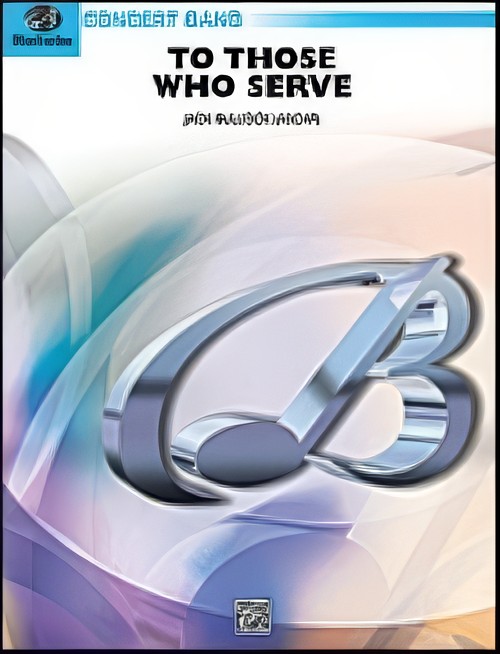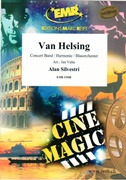Results
-
 £174.99
£174.99 -
 £154.99
£154.99The Tournament Wind Band Set (Score & Parts)
Colour and versatility is the key to this composition in three movements by Carl Wittrock. The Tournament is the most versatile piece of music you could wish for. Movement 1 (March) is an excellent, lively concert opener. The 2nd movement (Ballad) is a calm interlude, which provides much freedom for expression. Movement 3 (Dance) sweeps the piece along to the inevitable Grande Finale: a rousing melody with prominent rhythmic support. 11:45
Estimated dispatch 7-14 working days
-
 £154.99
£154.99The Verdict (Concert Band - Score and Parts)
The Verdict shows Otto Schwarz great skill at composing Concert Band items in his typical imaginative film musical style. It tells the tale of two brothers who differed greatly, one was handsome and the other a huntchback. The huntchback stabbed his brother after he had taken his bride from him and for this was sentenced to death. He was given a last minute reprise when he told of a spring that would end the local drought. An epic tale of love and revenge! 11:00
Estimated dispatch 7-14 working days
-
 £108.10
£108.10THEY CAN'T TAKE THAT AWAY FROM ME (Easy Concert Band) - Gershwin, George - Naulais, Jerome
Great Arrangement. American Grade 2. Duration: 3:11
Estimated dispatch 7-14 working days
-
 £58.95
£58.95TO THOSE WHO SERVE (Concert Band) - Bullock, Jack
"To Those Who Serve" is in the style of a very contemporary concert march. The main theme is introduced by horns and alto saxophones and proceeds with varied instrumental colours, through the related minor key and then back to the original theme with a bold flourish at the finish. It has dynamic rhythmical and melodic impact. The overall effect of this composition is punctuated with the crisp and clean style. A solid choice with a welcoming familiar sound. Duration: 2:11
Estimated dispatch 7-14 working days
-
 £192.00
£192.00VAN HELSING (Advanced Concert Band) - Silvestri, Alan - Valta, Jan
Movie: Van Helsing (Welcome to Transylvania/The Fire Mill/Bad Girls With Wings/Visiting Count Dracula/Dancing With Vampires/Final Battle/Reunited) Duration: 11:57 American Grade 4
Estimated dispatch 7-14 working days
-
 £232.00
£232.00VOLCANO (Advanced Concert Band) - Naulais, Jerome
Duration: 11:40
Estimated dispatch 7-14 working days
-
 £104.99
£104.99Westernhagen Live (Concert Band - Score and Parts)
With record sales of over 11 million, Marius M?ller-Westernhagen is counted among the most successful of German musicians. His lyrics are provocative yet thought provoking. His music covers all sorts of styles but mainly rock. Wolfgang W?ssner has created a rousing, rocking medley out of six of Westernhagen's best-known numbers: Es geht mir gut, Sexy, Freiheit, Lass uns leben, Willenlos and Mit Pfefferminz bin ich dein Prinz. 08:30
Estimated dispatch 7-14 working days
-
 £123.20
£123.203 Letzte Motetten - Anton Bruckner
Anton Bruckner (b. 4.9.1824, Ansfelden, d. 11.10.1896, Vienna) didn't have it easy. Throughout his life, the Austrian composer was plagued by self-doubt. Anton Bruckner came from a simple, rural background. After the death of his father, he was accepted as a choirboy at the monastery of Sankt Florian in 1837. After several years as a school assistant and his own organ and piano studies, he first worked as organist in St. Florian, then from 1855 as cathedral organist in Linz. Introduced to music theory and instrumentation by Simon Sechter and Otto Kitzler, he discovered Richard Wagner as an artistic role model, whom he admired throughout his life and also visited several times in Bayreuth.In 1868 Anton Bruckner became professor of basso continuo, counterpoint and organ at the Vienna Conservatory; ten years later court organist; and in 1891 finally honorary doctor of the University of Vienna. He was considered an important organ virtuoso of his era, but had to wait a long time for recognition as a composer. It was not until Symphony No.7 in E major, composed between 1881 and 1883, with the famous Adagio written under the effects of Wagner's death, that he achieved the recognition he had hoped for, even if he was reluctant to accept it given his inclination towards scepticism and self-criticism.Anton Bruckner was a loner who did not want to follow a particular school or doctrine. He composed numerous sacred vocal works, such as his three masses, the Missa Solemnis in B flat minor (1854), the Te Deum (1881-84) and numerous motets. As a symphonic composer, he wrote a total of nine symphonies and many symphonic studies from 1863 onwards, tending to revise completed versions several times over. Bruckner's orchestral works were long considered unplayable, but in fact were merely exceptionally bold for the tonal language of their time, uniting traditions from Beethoven through Wagner to folk music, on the threshold between late Romanticism and Modernism.Anton Bruckner composed about 40 motets during his lifetime, the earliest a setting of Pange lingua around 1835, and the last, Vexilla regis, in 1892.Thomas Doss has compiled some of these motets in this volume for symphonic wind orchestra.These motets show many characteristics of personal expression, especially Bruckner's colourful harmony in the earlier works, which is in places aligned with Franz Schubert (changes between major and minor; and movements in thirds). Later works are characterised by many components which, in addition to the expanded stature of the movements, include above all a sense of the instrumentation as an outward phenomenon and the harmony as a compositional feature that works more internally. Some aspects of Bruckner's work are the result of his long period of study, which familiarised him not only with the tradition of his craft, but also gave him insights into the "modernity" of his time in such composers as Wagner, Liszt and Berlioz.From this developed his personal standpoint, which always pursues the connection between the old and the new.
Estimated dispatch 7-14 working days
-
 £67.50
£67.50Christus factus est - Anton Bruckner
Thomas Doss orchestrated this inspiring and very playable transcription of Christus factus est (WAB 11), the motet written by Bruckner in 1884, for wind orchestra. After Messe fr den Grndonnerstag from 1844 and a motet for eight-voice mixed choir, three trombones and string instruments ad libitum from 1873, this was Bruckner's third setting of the Latin gradual (Gregorian chant) of the same name. Wagner's influence can be clearly heard.
Estimated dispatch 7-14 working days
